Galangal is a highly aromatic ingredient used extensively in many parts of South East Asia, and is often, a natural accompaniment to lemongrass.
Estimated reading time: 6 minutes
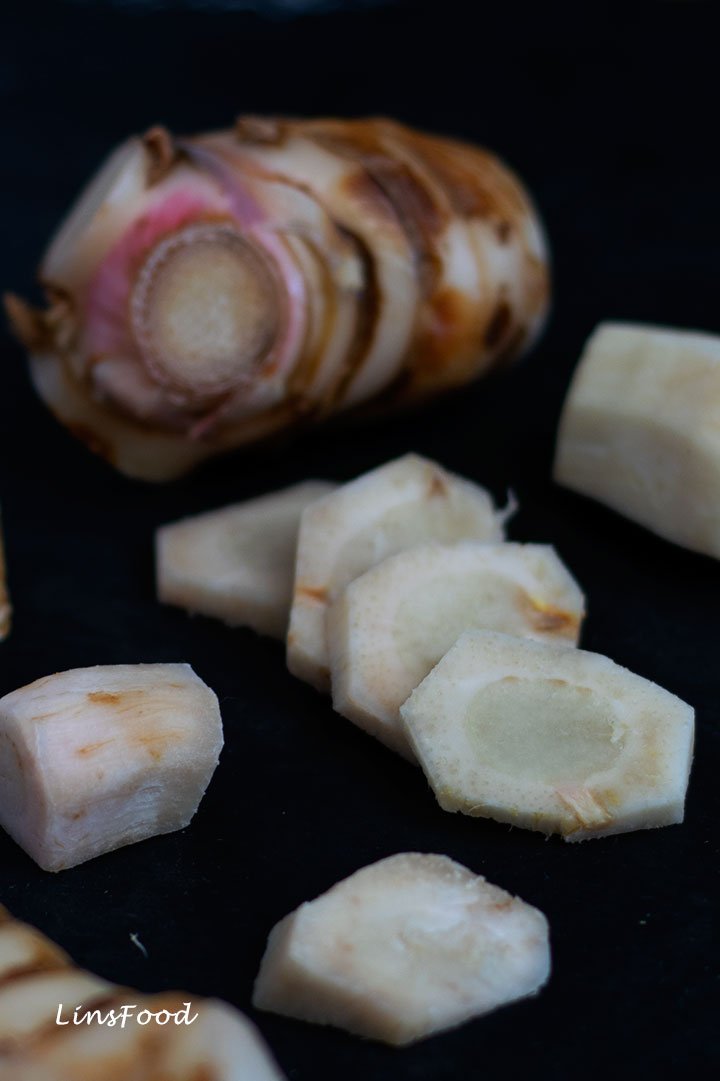
What is Galangal?
Galangal is a tuberous root that is used both for culinary as well as medicinal purposes. It may belong to the ginger family, but apart from them both being rhizomes, they are nothing alike in taste and aroma.
The four different types of galangal (also less commonly called galanga) that are in fairly common use are:
- greater galangal (what this post is about)
- lesser galangal (mostly used in Thai cooking)
- Chinese ginger
- kencur – mostly used in Indonesia
Alpinia galanga
Greater galangal (alpinia galanga), a native of Indonesia, is an ingredient that today, is commonly associated with the cooking of South East Asia. However, rather incredibly, it was used in Europe, hundreds of years ago. Many herbal European liqueurs contain galangal.
When I was researching Mulled Wine for an article many years ago, I came across a medieval recipe for it, containing galangal! To say that I was taken aback, was putting it mildly.
That recipe was in the original texts for the Forme of Cury, thought to have been written in the late 14th century by the master-cooks of Richard II.
I was blown away by that discovery, and it wasn’t the last time I came across the use of galangal in medieval times.

How to use Galangal?
Known as lengkuas in Malay and Indonesian, today it is used in curries, soups, salads and stir fries. Something that not many people are aware of, we tend to use galangal when we’re using lemongrass; the two have a natural affinity to each other.
Kar sod in Thai, it is a very tough and fibrous root, you need a very sharp knife to cut through it. If chopping or blending it, it is always a good idea to slice it into thin rings (as in the images here), to make it easier to be chopped.
You’ll find the instructions on how make the paste at the end of this post.
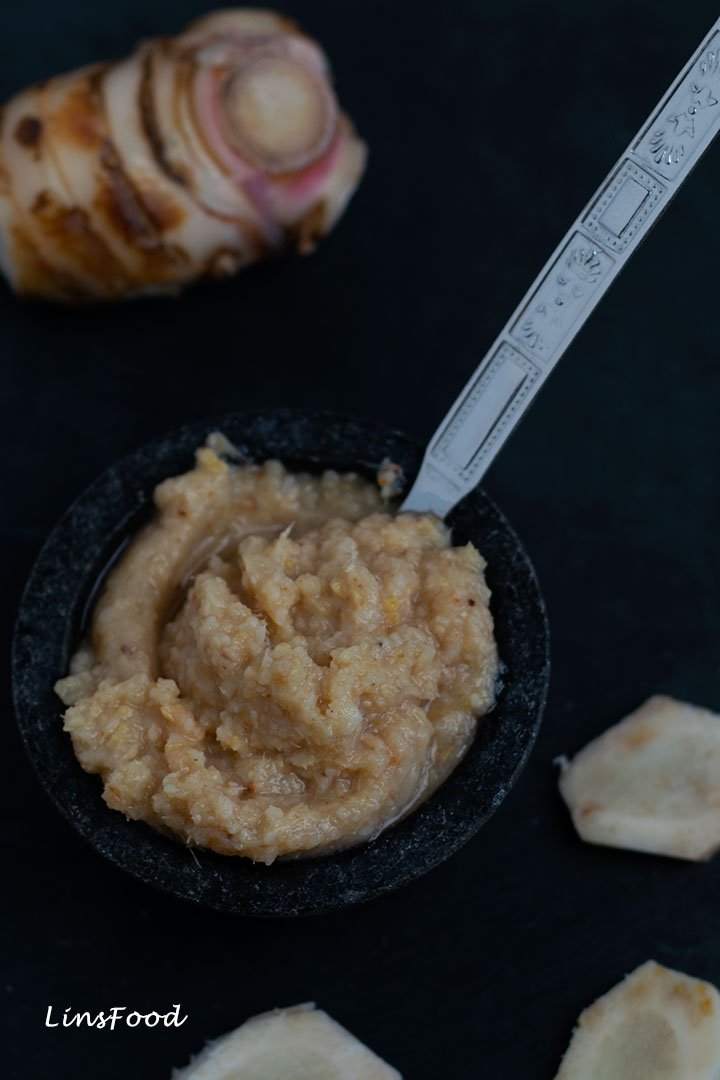
Are Galangal and Ginger the same thing?
Nope, absolutely not. They may both be members of the ginger family, but they are worlds apart in terms of flavour and aroma.
So what’s the difference between galangal and ginger?
Galangal has a floral, citrusy, and almost pine-like aroma. It also has a sweet flavour. Ginger, on the other hand, has a sharp, citrusy and spicy constitution. So they are not substitutes for each other. No way, not ever.
In terms of looks, the flesh of galanga is a pale white, with tinges of pink, while ginger is so very obviously yellow.
When I was about 13 years old, I was making beef rendang one day and thought I’d use more lengkuas as it’s an ingredient I just love.
That was a bit of a fail, as the rendang ended up having quite a sweet flavour and aroma to it. Lesson learned – always use it in moderation!
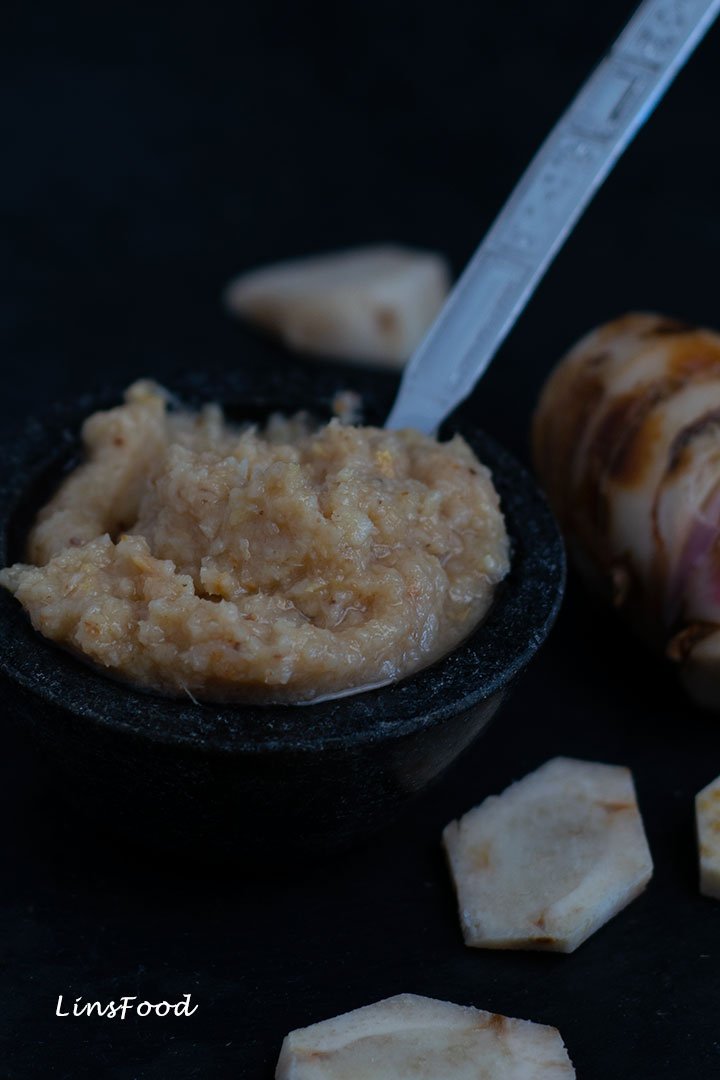
Substitute for Galangal
There is absolutely no substitute for galangal. No matter what you may read on other food sites.
No amount of ginger, however young, no amount of mace or cinnamon, is ever going to get you anywhere near that elusively sweet, floral aroma and flavour that you get from this rhizome.
So what to do if you can’t get lengkuas? Not much, apart from cooking your recipe without it. Sorry, that’s not much help, is it?
However, while the fresh root may not be the easiest thing to find, galangal paste, the powder and dried pieces are something that you should be able to source out pretty easily.
Here in the UK, most of our larger supermarkets stock the paste. And, it goes without saying that Amazon stocks all the forms mentioned above.
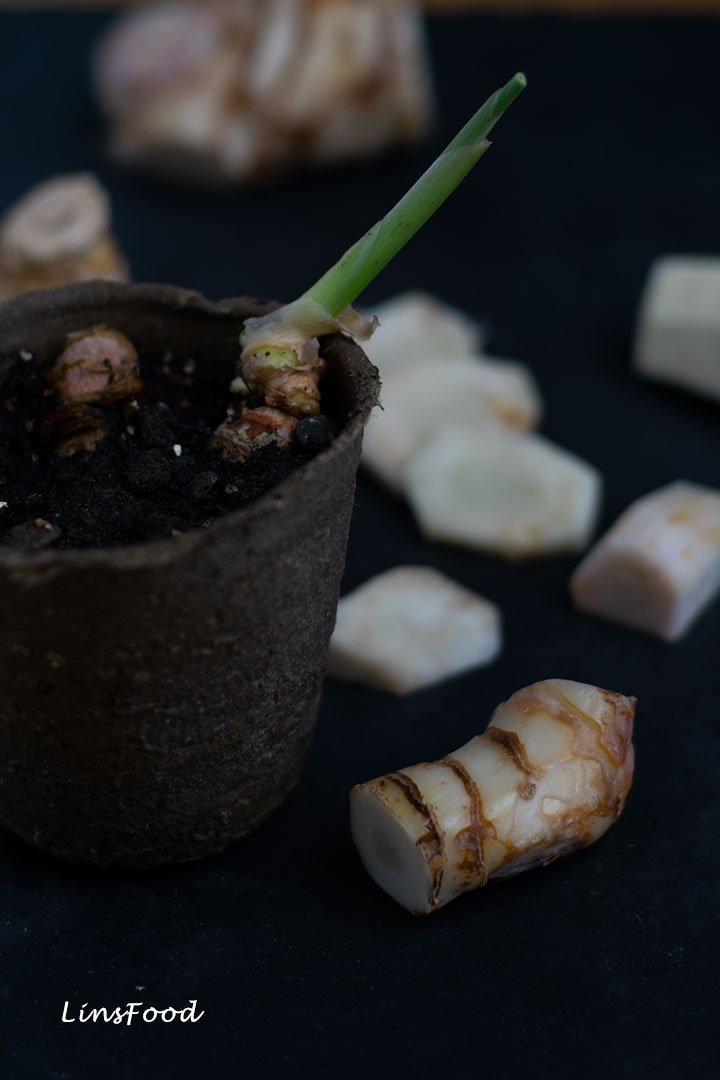
How to grow Lengkuas?
It’s pretty easy to grow, just like turmeric, ginger and other tubers and rhizomes. I always grow it in pots so that it can be overwintered in the conservatory, as it will not stand cold temperatures.
All you need to do is pot it up in some multipurpose compost, with about an inch or so sticking out of the compost. Keep the compost moist, but not overly wet, and place in a sunny spot. While it’s small, a sunny windowsill will work very well.
That’s it. All you have to do is wait patiently for the shoots to appear.
Galangal leaves are great in salads, by the way, just shred them up thinly and toss in. I use it in nasi ulam, a recipe that’s still on the old site.
Can Galangal be Frozen?
Absolutely! You can freeze galangal in 2 ways.
The whole tuber can be frozen, and then defrosted before being used. However, I would suggest slicing it into 2.5 cm (1 inch) pieces before freezing them in bags. The reason for this is so you can defrost what you need. Sometimes a recipe calls for only 1 inch of galangal, sometimes 2. So small pieces are the best.
One thing to note is that your galangal does get a little soft upon being defrosted, but that doesn’t affect its flavour and aroma, just add it to your recipe as the instructions call for.
The second way to freeze galangal is by making the paste as in the recipe below and freezing it in ice cube trays. It’s the perfect amount to use.
Recipes using Galangal
I have loads and loads of them on LinsFood.com, from all around South East Asia. I’ve given you a small gallery below. To find more, like Ayam Buah Keluak and Rendang Roast Turkey, just do a search on this site.
I shall add more recipes below with just SMR ones when they have been transferred over here.
You’ll also find a growing list of local ingredients on the Ingredients Page.
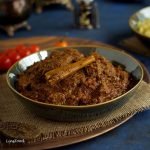
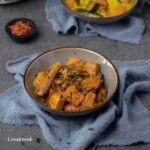

How to Make Galangal Paste
Equipment
- knife
- chopping board
- chopper
- spoon
- clean/sterilised jar
Ingredients
- 200 g fresh galangal root unskinned weight
- 125 ml water or vegetable oil (you might need less)
- 2 Tbsp vegetable oil to top the jar
Instructions
- Cut off the tough outer layer of the galangal and discard.
- Slice the galangal into thin rounds.
- Place in the chopper and add water.
- Chop until you get a smooth paste.
- Transfer to your clean jar and top with a 1cm layer of oil (about ½ an inch). This will discourage bacterial growth and prolong the life of your paste for up to two weeks.You can also freeze your galangal paste in an ice cube tray. Use the frozen galangal as needed, can be used from frozen. An ice cube size is usually perfect for most recipes.

24 thoughts on “What is Galangal? (& how to make Galangal Paste)”